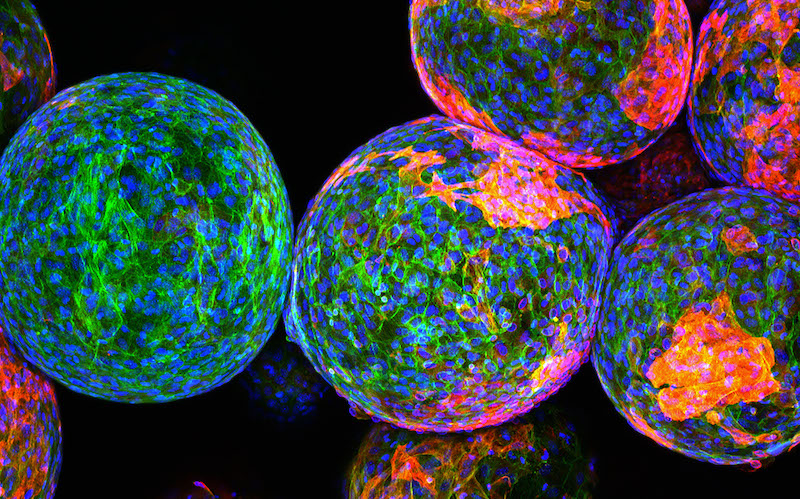JDRF Beta Cell Replacement Consortium Meeting: Advancing Novel Therapies

 Beta cell replacement, including encapsulation, is an advanced form of transplantation where a beta cell from a renewable source is combined with a strategy to keep these cells protected from immune attack. While the first-in-class technology for encapsulating beta cell therapies is being tested in clinical trials—and might be the beginning of insulin independence for T1D—we have a long way to go in terms of research before it is realized.
Beta cell replacement, including encapsulation, is an advanced form of transplantation where a beta cell from a renewable source is combined with a strategy to keep these cells protected from immune attack. While the first-in-class technology for encapsulating beta cell therapies is being tested in clinical trials—and might be the beginning of insulin independence for T1D—we have a long way to go in terms of research before it is realized.
The JDRF Beta Cell Replacement Consortium Meeting, which was held last week, brought some of the best minds together to advance beta cell replacement treatments. There were more than 50 investigators in attendance from both academia and the commercial sector, and the workshop included some of the key research questions facing the beta cell replacement community, such as:
- Cell supply: Renewable beta cell source from stem cells or other cell sources?
- Cell delivery systems: How do you allow the implanted cells to interact with the environment?
- Strategies to provide immunoprotection: Encapsulation devices, drugs providing local immunosuppression or gene modification as a decoy tactic?
- Oxygen and other nutrients: How do you get these in, while keeping the immune system out?
- Implantation sites: Where do you implant the beta cells in the body so that they are safe and effective?
- Path to the clinic: How can we better prepare for clinical trials and accelerate the drug development process?
“The meeting has provided a unique opportunity to review the great progress over the last few months, many of them established as collaborations between groups,” explains Esther Latres, Ph.D., director of research at JDRF and lead of the beta cell replacement program. “Importantly, critical discussion topics towards accelerating and combining the most advanced technologies into a replacement therapy in the near term were highly prioritized.”
At JDRF, we have been funding beta cell replacement research for more than a decade. In 2007, JDRF made beta cell replacement a priority within our research roadmap, and, in 2013, we organized the Encapsulation Consortium, convening leading experts to advance the development of beta cell replacement technology. As a result, there are now five companies and several academic centers that, with JDRF funding, are doing clinical trials to test their beta cell replacement strategies.
“The speed with which advances have been made in beta cell replacement research would not have been possible without the dedication and expertise of the consortium members and their willingness to work together to advance the science and develop a therapy with the potential to treat many more people with T1D than is an option today,” says Marjana Marinac, Pharm.D., JDRF’s senior director, regulatory affairs for drugs and biologics.
Go here for more information on JDRF’s beta cell replacement program.
(Image: Andrew Bader, Omid Veiseh, Arturo Vegas, Anderson/Langer Laboratory, Koch Institute at MIT)